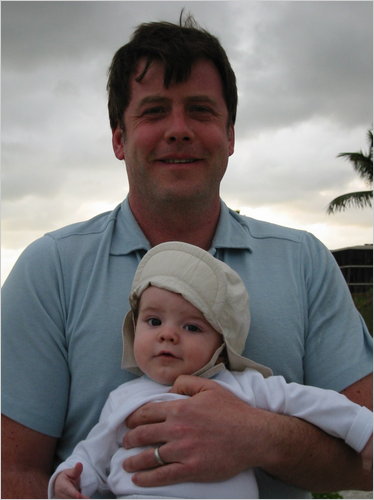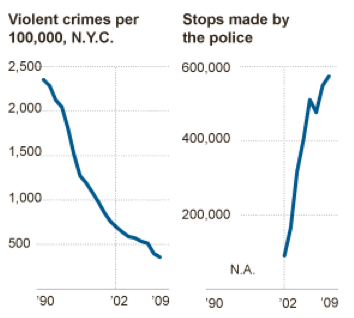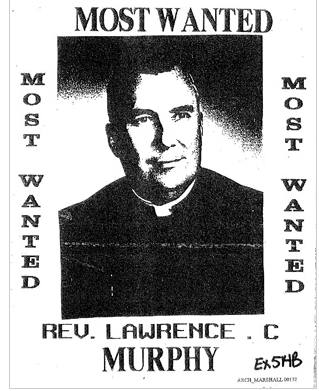After Roger Ebert’s death last week, I picked up The Emperor of All Maladies: A Biography of Cancer, by Siddhartha Mukherjee, which was recommended during a discussion on how the war on cancer seemed hopeless. I’m not finished with the book yet, but I can already recommend it for being one of the best medical non-fiction books I’ve ever read.
The facts in Mukherjee’s “biography of cancer” seem to indicate that “no simple, universal, or definitive cure is in sight – and is never likely to be”, but Mukherjee also believes that medical science continues to make profound progress in understanding and treating cancer. And if anything, we might be farther along had we funded cancer research with the resources and commitment it requires.
After World War 2 drained interest and funding from cancer research, Mukherjee writes, “cancer again became the great unmentionable, the whispered-about disease that no one spoke about publicly.” As an example, he retells a story from the 2001 book, The Human Side of Cancer, in which a breast cancer activist describes being shunned by the New York Times:
In the early 1950s, Fanny Rosenow, a breast cancer survivor and cancer advocate, called the New York Times to post an advertisement for a support group for women with breast cancer. Rosenow was put through, puzzlingly, to the society editor of the newspaper. When she asked about placing her announcement, a long pause followed. “I’m sorry, Ms. Rosenow, but the Times cannot publish the word breast or the word cancer in its pages. “Perhaps,†the editor continued, “you could say there will be a meeting about diseases of the chest wall.†Rosenow hung up, disgusted.
The original source for Rosenow’s story – The Human Side of Cancer, by Dr. Jimmie C. Holland – has an upbeat coda:
However, [Rosenow and her friend] persisted, and their devoted efforts resulted in what is widely known as Reach to Recovery, a worldwide support program for women with breast cancer, administered today through the American Cancer Society.
Sixty-five years after the era of the Cleaver family, we’re still having serious debates over whether mothers should be allowed to breast-feed children in public. And Lady Justice herself was shamed about her wardrobe malfunction not too long ago. That the Times, still a stodgy paper today, would be too squeamish 65 years ago to print the word “breast” seems, well, self-evident. And so Rosenow’s story has been repeated in much of the major media coverage of Mukherjee’s book, including NPR, the Boston Globe, and even the New York Times itself.
What Ms. Rosenow described may have actually happened (it’s not like she or the Times society editor had Google or Lexis-Nexis back then), but a quick search of the New York Times digital archive shows that the Times had published articles about breasts and cancer throughout the 1950s.
For example, on September 24, 1950, the Times ran a story headlined “Movie Aids Cancer Detection:”
A color film designed to aid women in recognizing early signs of breast cancer is available for showings before Brooklyn women’s groups. Titled “Breast Self-Examination,” it was produced by the American Cancer Society and the National Cancer Institute of the United States Pubic Health Service.
Besides running notices of which local theaters were screening “Breast Self-Examination,” the Times also wrote several articles about the movie’s educational impact: “Cancer Film Saves Lives”, the Times reported on April 22, 1951. And, a year after the film’s introduction, the Times reported its success: 911,000 SAW CANCER FILM; Year’s Record Cited in Showing Self-Test for Women. And of course, the Times found fit to print the obligatory self-back-patting hug-your-newspaper-today feature: NEWSPAPER AID PRAISED; Cancer Experts Say Sufferers Gain by Care Publicity:
Newspapers and the radio were credited today with helping doctors fight cancer by causing sufferers to seek early treatment.
“There is no question but that the information made public by newspapers, radio, and other news services is making it possible for us to see patients with breast cancer earlier than ever before,” Dr. J. Elliott Scarborough, Jr., declared.
In fact, the breast cancer advice that the Times printed in 1952 doesn’t seem far removed from what you’d find in any contemporary medical column:
SELF-EXAMINATION URGED: Women Must Detect Early Stage of Breast Cancer, Doctor Says
If breast cancer is to be detected in its early stages, it is the women themselves who must do it…Dr. Haagensen said the breasts should be examined at least every two months to be reasonably sure they are free of cancer signs…Physicians, Dr. Haagensen said, should teach women self-examination.
Of course, cancer is a far more common topic of public concern and media coverage today. As Mukherjee himself points out, that’s because until relatively recently, humans generally didn’t live long enough to die from cancer. One of the earliest mentions of breast cancer in the Times archive occurs in 1852, in its column titled, Weekly Report of Deaths in the City and County of New York. Between January 10-17, the Times noted 324 deaths, the majority of them children. The top killers are diseases we rarely hear today: 54 deaths from consumption, 28 to convulsions, 20 to scarlet fever, 18 to “Dropsy in the head.” In contrast, “Cancer” and “Cancer of Breast” accounted for 1 death apiece. That cancer has become medicine’s public enemy number one is almost a sign of wealth and progress. In impoverished countries, cancer doesn’t even rank among the top 10 in causes of death.
If you’re interested in taking a depressing trip through medical history, type “cure for cancer” into the Times’ digital archive. You’ll find headlines from every decade – if not every one or two years – since 1852 touting a promising development in the fight against cancer:
- 1865: IMPORTANT SURGICAL OPERATION
- 1891: A CURE FOR CANCER. MEDICAL SCIENCE ON THE HIGH ROAD TO ITS DISCOVERY.
- 1900: X RAY CURE FOR CANCER.
- 1902: MALARIA A CURE FOR CANCER
- 1908: ERYSIPELAS GERMS AS CURE FOR CANCER
- 1925: THE CURE OF CANCER. Surgery Alone, Not Medicine, Is Effective, Doctor Asserts
- 1930: REPORTS CANCER REMEDY. Italian Injects Chemical Under Skin to Destroy Tumor.
- 1933: 15,608 NEW CURES OF CANCER CITED
- 1939: ‘FREEZING’ METHOD FOR CANCER HAILED
- 1953: DOCTOR FORESEES CANCER PENICILLIN’ Specialist Hopeful Drug Cure May Be Found in 10 Years
- 2011: Computer Scientists May Have What It Takes to Help Cure Cancer
- 2012: Is the Cure for Cancer Inside You?
If the war against cancer seems like an unending series of misguided schemes and false hope – much like our ongoing wars against terror, drugs, and poverty ‐ it’s because, like those wars, the enemy was never just one monolithic opponent that one kind of “weapon” (and lots of it) could ever defeat. So it’s fitting that the facts may be more complicated than they seem in Ms. Rosenow’s anecdote – because that’s the case with everything related to cancer. One of the most interesting things about Mukherjee’s attempt to write a “biography” of cancer is how, when the literary framing is inadequate for describing cancer, it serves only to more fully illuminate the scope of this war.













 For your Friday reading pleasure, a
For your Friday reading pleasure, a 


